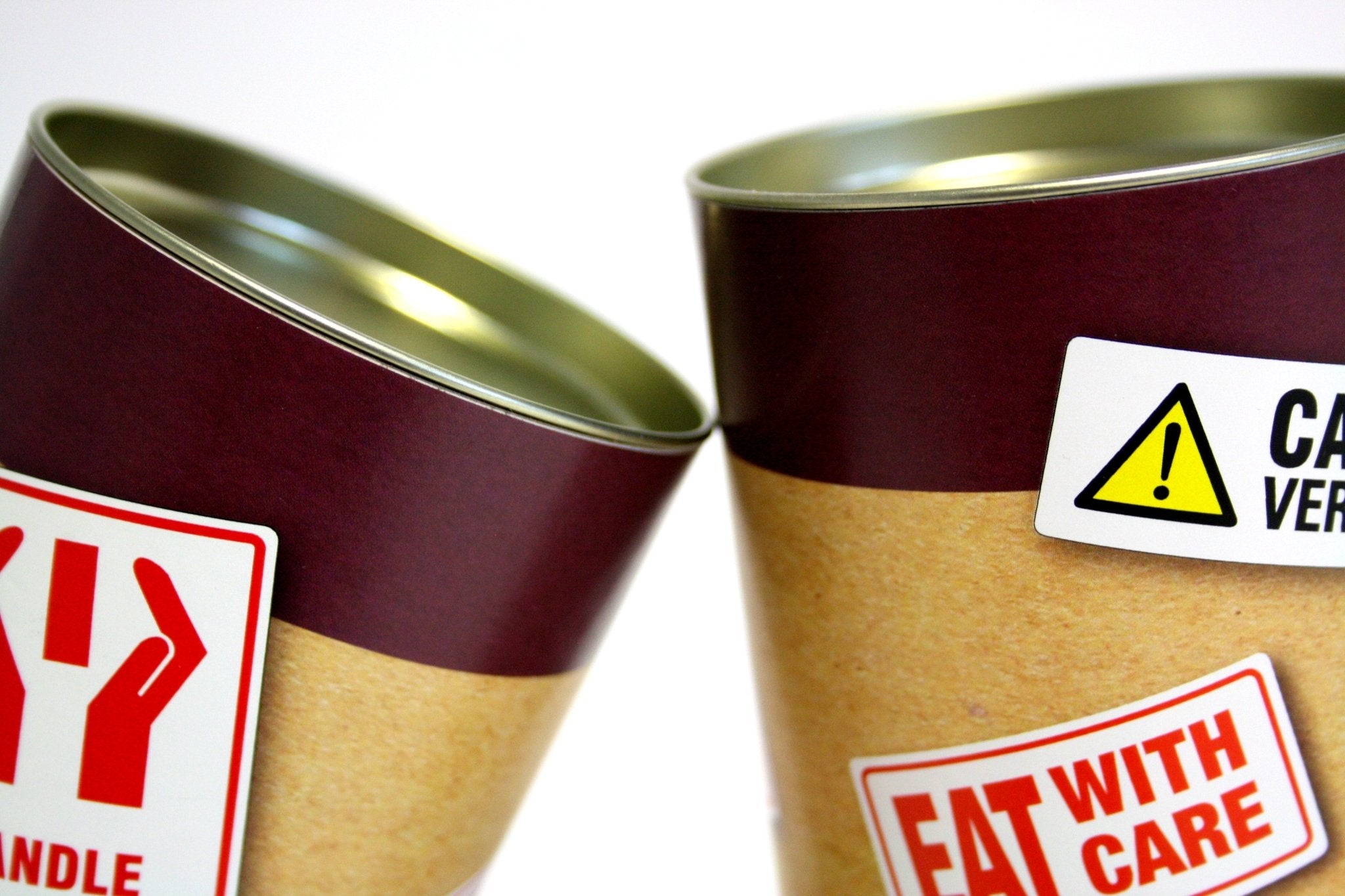The Basics: Food Safety

Knowing the food safety procedures is one of the most important characteristics of a Chef.
We cannot talk enough about the importance of taking care of food and equipment in the kitchen. It is extremely harmful to the establishment's image if the food services led to occurrence of a disease caused by food in poor sanitary conditions. There must be a hygienic environment and detailed procedures for effective handling of food and a safe working environment.
Our products help you protect against accidents and store them in a hygienically safe way. In our knife backpacks, you can store your knives and other utensils and strap them in to help protect from accidents. In addition, they are water-resistant, which is very important in the kitchen environment to avoid contamination.

Our beanie hat is the perfect option to protect your hair and to maintain personal hygiene during the service. In addition, we have many products that are not just aesthetically designed but are also functional for everyday use in the kitchen.

Avoiding Cross-Contamination
Food can transmit several diseases. The most common symptoms are abdominal cramps, nausea, vomiting, and diarrhea - possibly accompanied by fever - which may appear hours after consuming the infected food. However, it can take many days to appear in some cases. To officially declare contamination in the restaurant, two or more people who have consumed the same food must present the symptoms, and health inspectors must confirm this.
Many illnesses result from the unhygienic handling of food in the kitchen. Cross-contamination occurs when disease-causing elements or harmful substances are transferred from one contaminated surface to another.
Careful personal hygiene is among the best defences against cross-contamination. For example, an employee who has a contagious disease or an infected cut on his hand should not work because it puts all customers at risk.
The most significant risk of cross-contamination of food occurs during the preparation stage. Therefore, work areas and meat boards are recommended to be separated for raw and cooked foods. In addition, equipment and boards must always be clean and thoroughly sanitized between use.
The cook must store food carefully to prevent contact between raw and cooked items. Place containers under raw food to catch drips. Do not touch ready-to-eat food with your hands. Instead, use suitable tools or disposable gloves.

Wash Your Hands Properly
In today's times, we don't need to explain too much how important it is to wash your hands frequently. But in the kitchen, this step is crucial to maintain food safety.
To reduce the possibility of cross-contamination, wash your hands frequently and correctly. Hands and forearms should be washed with soap and water at 110°F for at least twenty seconds. Wash your hands at the beginning of each shift and after each new task, after handling raw foods, going to the bathroom, sneezing, coughing, and so on, and also after touching anything non-food.

Keeping Food Out of the Danger Zone
An essential weapon against food diseases is strict control of time and temperature. In general, these microorganisms need to be present in food in large amounts to cause any disease.
Some microorganisms survive at any temperature. But for most, the best environment is temperatures between 40°F and 140°F - the danger zone. This is because most pathogens are either killed or do not reproduce at temperatures above 140°F, and storing food below 40°F slows or stops the reproduction cycle. (Note that the poisoning pathogens may be destroyed during cooking, but the toxins already produced will still be there.)

Cooling Food Safely
One of the main causes of food borne illness is inadequate cooling. Cooked and stored foods need to be cooled to less than 40°F as quickly as possible. This should be done within four hours unless the two-stage cooling method is used. In the first stage, foods must be cooled to 70°F for a maximum of two hours. In the second stage, they should reach 40°F or less within an additional four hours, giving a total cooling time of six hours.
The proper way to cool hot liquids is to place them in a metal container, kept in an ice-water bath that comes to the same level as the liquid inside the container. Stir the liquid frequently, mixing the hottest liquid in the center and the coldest liquid on the sides, lowering the temperature more quickly.
Semi-solid and solid foods must be refrigerated in single layers, in shallow containers, to allow greater exposure of their surface to cold air. For the same reason, large pieces of meat or other foods should be cut into smaller portions, cooled to room temperature, and packaged before refrigeration.
Safely Reheating Food
Food prepared in advance and then reheated must pass through the danger zone as quickly as possible and be heated to at least 170°F for a minimum of fifteen seconds. If all procedures for cooling and reheating are followed, food can be cooled and reheated more than once.
Food should be brought to the proper temperature over direct heat (burner, stove, grill, or oven). A warmer will keep food properly reheated above 170°F, but it won't get it out of the danger zone quickly enough. Use instant-read thermometers to check temperatures.
Defrosting Food Safely
Frozen foods can be safely defrosted in many ways. The best method - and the slowest - is to let the food thaw in the refrigerator. To prevent contamination, it should remain packaged and placed in a shallow container on a lower shelf.
If there is no time for the process to occur in the refrigerator, the food, covered or packaged, can be placed in a container under running water at a temperature of approximately 70°F or less.
Never defrost food at room temperature. It is perfect for the growth of microorganisms!
Cleaning and Sanitizing
Cleaning refers to removing dirt or food particles while sanitizing involves using moist heat or chemical agents to eliminate disease-causing microorganisms.
For equipment that cannot be immersed in a sink or utensils, such as knives and cutting boards during food preparation, use a cloth soaked in sanitizing solution to clean and sanitize between uses.
Small appliances, tools, pans, plates, cutlery, and glasses should be placed in the dishwasher or washed by hand in a three-compartment sink. After sanitizing, equipment and tableware - plates, cutlery, and glasses - should be air-dried because using paper or cloths can result in cross-contamination.
Our 10-piece knife guard is a product that will not only protect against accidents but also keep your knives clean and prevent contamination when they are not in use.

Careful sanitation procedures, proper food handling, and well-maintained facilities combined prevent infestations. Take all necessary steps to keep the kitchen clean, sanitized, and safe from accidents. This is one of the best qualities a professional chef should possess!
To find out more about Chef Sac products to organize your culinary tools go to www.chefsac.com
- Tags: #Chef Hat #Food Safety #Knife Accessories #Knife Safety #Knife Safety Tips #Knife Sheath #Restaurant Tools bag for chefs bags for chefs chef backpack Chef bag chef bags chef essentials chef gifts Chef Knife chef secrets chef tools Chefs chefs gifts culinary arts culinary school culinary students gift ideas kitchen hacks Knife bag knife gifts knife maintenance knives lifestyle presents restaurants
2 comments
-
Clare Martin on
It’s good that you brought up how an essential weapon when it comes to food safety is the strict control of time and temperature to avoid microorganisms getting into the food and producing toxins that carry diseases. Speaking of food safety, my brother recently invested in a food manufacturing company that makes packaged snack products. I hope he was able to find the metal-detectable food hygiene sleeve he needed for his factory soon to help with the food safety of his new business venture. https://detectapro.com/?cpo_portfolio=sleeve



I never realized that food can be filled with microorganisms if you defrost it at room temperature. This reminds me of food manufacturing companies that ought to adhere to food safety requirements for the safety of their consumers. Maybe, it will be best for them to consider attending an FSPCA PCQI online course to be better equipped with the right food safety skills and knowledge. https://thefoodsafetydoctorllc.com/fspca-pcqi-training-1